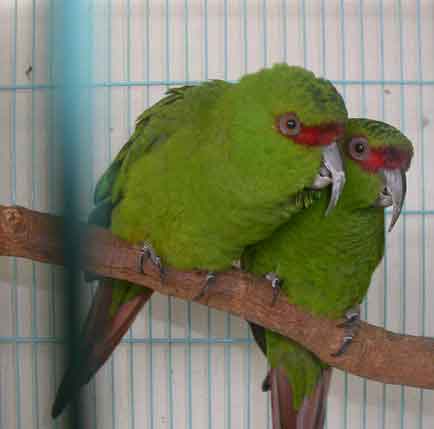
Enicognathus leptorhynchus (*)
Superregnum: Eukaryota
Cladus: Unikonta
Cladus: Opisthokonta
Cladus: Holozoa
Regnum: Animalia
Subregnum: Eumetazoa
Cladus: Bilateria
Cladus: Nephrozoa
Superphylum: Deuterostomia
Phylum: Chordata
Subphylum: Vertebrata
Infraphylum: Gnathostomata
Megaclassis: Osteichthyes
Cladus: Sarcopterygii
Cladus: Rhipidistia
Cladus: Tetrapodomorpha
Cladus: Eotetrapodiformes
Cladus: Elpistostegalia
Superclassis: Tetrapoda
Cladus: Reptiliomorpha
Cladus: Amniota
Classis: Reptilia
Cladus: Eureptilia
Cladus: Romeriida
Subclassis: Diapsida
Cladus: Sauria
Infraclassis: Archosauromorpha
Cladus: Crurotarsi
Divisio: Archosauria
Cladus: Avemetatarsalia
Cladus: Ornithodira
Subtaxon: Dinosauromorpha
Cladus: Dinosauriformes
Cladus: Dracohors
Cladus: Dinosauria
Ordo: Saurischia
Cladus: Eusaurischia
Subordo: Theropoda
Cladus: Neotheropoda
Cladus: Averostra
Cladus: Tetanurae
Cladus: Avetheropoda
Cladus: Coelurosauria
Cladus: Tyrannoraptora
Cladus: Maniraptoromorpha
Cladus: Maniraptoriformes
Cladus: Maniraptora
Cladus: Pennaraptora
Cladus: Paraves
Cladus: Eumaniraptora
Cladus: Avialae
Infraclassis: Aves
Cladus: Avebrevicauda
Cladus: Pygostylia
Cladus: Ornithothoraces
Cladus: Ornithuromorpha
Cladus: Carinatae
Parvclassis: Neornithes
Cohors: Neognathae
Cladus: Neoaves
Cladus: Telluraves
Cladus: Australaves
Ordo: Psittaciformes
Familia: Psittacidae
Subfamilia: Arinae
Tribus: Arini
Genus: Enicognathus
Species: Enicognathus leptorhynchus
Name
Enicognathus leptorhynchus (King, 1831)
Synonyms
Psittacara leptorhyncha (protonym)
References
King, P.P. 1831. Characters of New Genera and Species of Birds from the Straits of Magellan. Proceedings of the Committee of Science and Correspondence of the Zoological Society of London Pt.1 no.1: 14–15 BHL; no.3: 29–30 BHL Reference page. no.1 p. 14 BHL
Vernacular names
català: Cotorra xilena
Deutsch: Langschnabelsittich
English: Slender-billed Parakeet
español: Cotorra choroy
suomi: Chilenaratti
français: Conure à long bec
հայերեն: Երկարակտուց զմրուխտե թութակ
italiano: Parrocchetto beccosottile
The slender-billed parakeet or choroy (Enicognathus leptorhynchus) is a species of bird in subfamily Arinae of the family Psittacidae, the African and New World parrots. It is endemic to Chile, where it is known by the local common name choroy.[3][4]
Taxonomy and systematics
The slender-billed parakeet has also been named Enicognathus byroni, but the current specific epithet leptorhynchus has priority.[4] It shares its genus with the austral parakeet (E. ferrugineus) and is monotypic.[3]
Description
The slender-billed parakeet is about 40 cm (16 in) long. The species' English name comes from its greatly elongated mandible. The sexes are the same. Adults have a red forehead and lores in an otherwise yellow-green face. Their upperparts are dull green. Their underparts are yellowish green with a reddish patch on the belly. Their tail is also reddish; their wings are mostly green with bluish green primaries. Immature birds are similar to adults but are a darker green and have whitish skin around the eye.[4]
Distribution and habitat
The slender-billed parakeet is endemic to central Chile between the Santiago Metropolitan Region and Los Lagos Region; it also occurs in the Aysén Region, but rarely, and has been recorded as a vagrant in Argentina.[3][4][5]
The slender-billed parakeet primarily inhabits southern beech (Nothofagus) and Chilean pine (Araucaria araucana) forest. It also occurs in nearby semi-open areas, ranchlands, and in cultivated areas, all of them usually in winter. In elevation it ranges as high as 2,000 m (6,600 ft).[4]
Behavior
Movement
The slender-billed parakeet moves from the upper elevations to lower ones in the austral winter months of May through September.[4]
Feeding
The slender-billed parakeet's year-round diet includes seeds of grass and thistle, buds, and berries. In autumn the seeds of Araucaria are a major component; it appears that its unusual bill is adapted to feed on them. Seeds of Nothofagus are also important at other times of the year. It is a serious agricultural pest on Chiloé Island.[4]
Breeding
The slender-billed parakeet breeds between November and February. It usually nests in tree cavities and is known to add twigs to raise a deep cavities's floor. Often several pairs will nest in the same tree. It also occasionally uses rock crevices and has been recorded making a twig nest in bamboo. At least one nest held 10 eggs but they were suspected of being laid by two females; another nest held five eggs. The incubation period is about 26 to 28 days and fledging occurs about 42 to 45 days after hatch.[4]
Dickcissel male perched on a metal pole singing, with neck stretched and beak open.
Songs and calls
Listen to slender-billed parakeet on xeno-canto
Vocalization
The slender-billed parakeet's most common call is "a nasal grating note, typically repeated in long series, e.g. “grrreh-grrreh-grrreh...”." It also makes "higher-pitched slightly more melodious screeches, “kreeh!” or “kerreh!”."[4]
Status
The IUCN has assessed the slender-billed parakeet as being of Least Concern. It has a fairly large range and though its population size is not known it is believed to be stable. No immediate threats have been identified.[1] Though its population declined in the 1950s and 1960s due to deforestation and other causes, it is still considered fairly common. It is gregarious and roosts communally; roosts of up to 2000 individuals have been noted.[4]
References
BirdLife International (2021). "Slender-billed Parakeet Enicognathus leptorhynchus". IUCN Red List of Threatened Species. 2021: e.T22685891A208980485. doi:10.2305/IUCN.UK.2022-1.RLTS.T22685891A208980485.en. Retrieved 15 March 2023.
"Appendices | CITES". cites.org. Retrieved 4 March 2023.
Gill, F.; Donsker, D.; Rasmussen, P., eds. (January 2023). "Parrots, cockatoos". IOC World Bird List. v 13.1. Retrieved 18 February 2023.
Collar, N., E. de Juana, and P. F. D. Boesman (2020). Slender-billed Parakeet (Enicognathus leptorhynchus), version 1.0. In Birds of the World (J. del Hoyo, A. Elliott, J. Sargatal, D. A. Christie, and E. de Juana, Editors). Cornell Lab of Ornithology, Ithaca, NY, USA. https://doi.org/10.2173/bow.slbpar1.01 retrieved March 15, 2023
Remsen, J. V., Jr., J. I. Areta, E. Bonaccorso, S. Claramunt, A. Jaramillo, D. F. Lane, J. F. Pacheco, M. B. Robbins, F. G. Stiles, and K. J. Zimmer. 30 January 2023. Species Lists of Birds for South American Countries and Territories. https://www.museum.lsu.edu/~Remsen/SACCCountryLists.htm retrieved January 30, 2023
Retrieved from "http://en.wikipedia.org/"
All text is available under the terms of the GNU Free Documentation License

